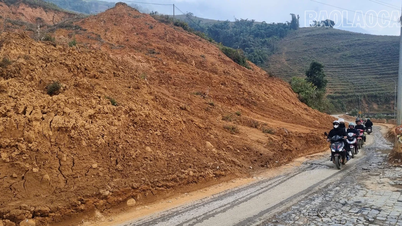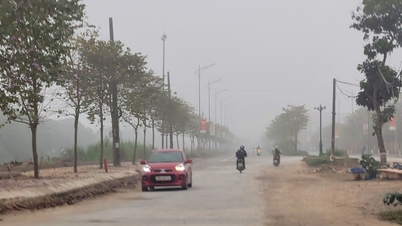 |
| Population is distorting Canada's economic picture, pushing interest rates higher than necessary and making the fight against inflation more difficult. (Source: mpamag.com) |
The record wave of immigration is clouding the Bank of Canada's (BoC) economic picture, distorting key statistics and making its fight against inflation more difficult, the article says.
Record population growth
The surge in newcomers, largely due to unplanned arrivals from foreign students and temporary workers, pushed Canada's population growth rate to 3.2% – one of the fastest in the world .
The country has added more than 1.2 million new residents in just one year, boosting GDP growth and consumer demand, leading to higher housing costs while also reducing productivity and increasing unemployment. This is causing consternation for Canadian policymakers and economists.
National Bank of Canada economist Stefane Marion said population growth is making it difficult for the Bank of Canada to assess the limits of real interest rates. The Bank of Canada raised its benchmark interest rate to 5% in the middle of last year after the economy showed surprising strength, especially in consumer spending.
While policymakers around the world struggle to forecast post-pandemic supply chains, the BoC is the only central bank setting interest rates amid a growing baby boom.
The timing is awkward, adding to the risk to the Bank of Canada’s already tarnished reputation as policymakers consider how long they will keep lending costs at their highest levels in more than two decades. Marion said no one has calibrated models for this. The Bank of Canada may have misjudged the situation.
Last April, the BoC spent a significant amount of time in its rate-setting meetings discussing how immigration was impacting its interpretation of economic data. When the BoC raised its benchmark interest rate in July, Governor Tiff Macklem assessed the impact of immigration on price pressures as “close to zero.”
However, Bank of Canada Deputy Governor Toni Gravelle recently acknowledged that population growth has led to higher housing costs, with mortgage rates and rents being the main drivers of inflation, which is expected to hit 3.4% in December 2023. However, he also said that in the long run, immigration will help curb inflation, boosting GDP by 2-3 percentage points.
Strong population growth makes traditionally used economic indicators harder to interpret, adding another layer of complexity to monetary policy decisions, said Dominique Lapointe, an economist at Manulife Investment Management.
"Health" is unpredictable
The job market is another example of the difficulty of forecasting. Job growth must now be viewed in the context of an expanding labor force. In 2019, the economy added an average of 22,000 new jobs per month, and the unemployment rate was stable. Last year, Canada added about 36,000 new jobs per month, but unemployment continued to rise.
If growth slows in 2024, economists predict Canada's unemployment rate could rise to 6.7% by the end of the year, a rise that would represent the biggest deterioration in labor market conditions among G7 countries.
A rise in unemployment of that size typically coincides with a recession. But analysts say Canada will likely add jobs by 2024. It's the growth in the workforce that will drive the rate higher.
Mr. Marion is one of many economists who say the influx of people into Canada is masking underlying weakness in the country’s economy. Adjusted for population, Canada’s economy hasn’t grown since the second quarter of 2022, the year after the Bank of Canada began raising interest rates. GDP per capita last year, a measure of living standards, fell to 2017 levels.
Desjardins Group chief economist Randall Bartlet said population growth is distorting things and it's really hard to understand the "health" of the Canadian economy at this point.
There are suggestions that a mild recession is coming in the first half of this year, but in per capita terms, Canada has been in recession for some time.
Relying more on labor rather than capital investment also continues to pose risks to Canada's productivity, which has fallen for six consecutive quarters, and is a source of criticism for Prime Minister Justin Trudeau's government.
Bank of Montreal strategist Benjamin Reitzes says part of the problem is that the Canadian government is not prepared for the influx. There is not enough investment in all types and levels of infrastructure, and that could be a drag on productivity overall.
(according to Financial Post)
Source


![[Photo] General Secretary To Lam works with the Standing Committees of the 14th Party Congress Subcommittees](/_next/image?url=https%3A%2F%2Fvphoto.vietnam.vn%2Fthumb%2F1200x675%2Fvietnam%2Fresource%2FIMAGE%2F2025%2F12%2F09%2F1765253019536_a1-bnd-0983-4829-jpg.webp&w=3840&q=75)




![[Photo] Urgently help people soon have a place to live and stabilize their lives](/_next/image?url=https%3A%2F%2Fvphoto.vietnam.vn%2Fthumb%2F1200x675%2Fvietnam%2Fresource%2FIMAGE%2F2025%2F12%2F09%2F1765248230297_c-jpg.webp&w=3840&q=75)













































































































Comment (0)